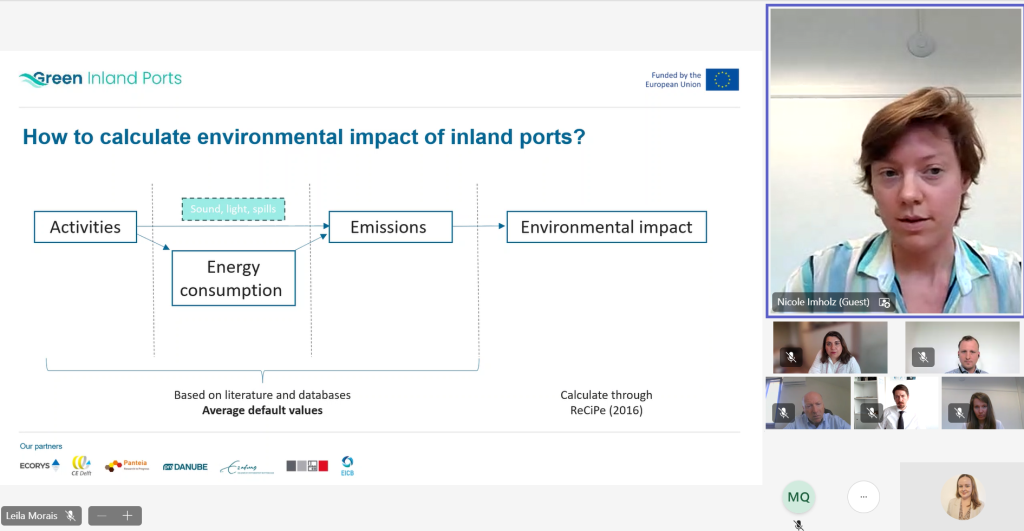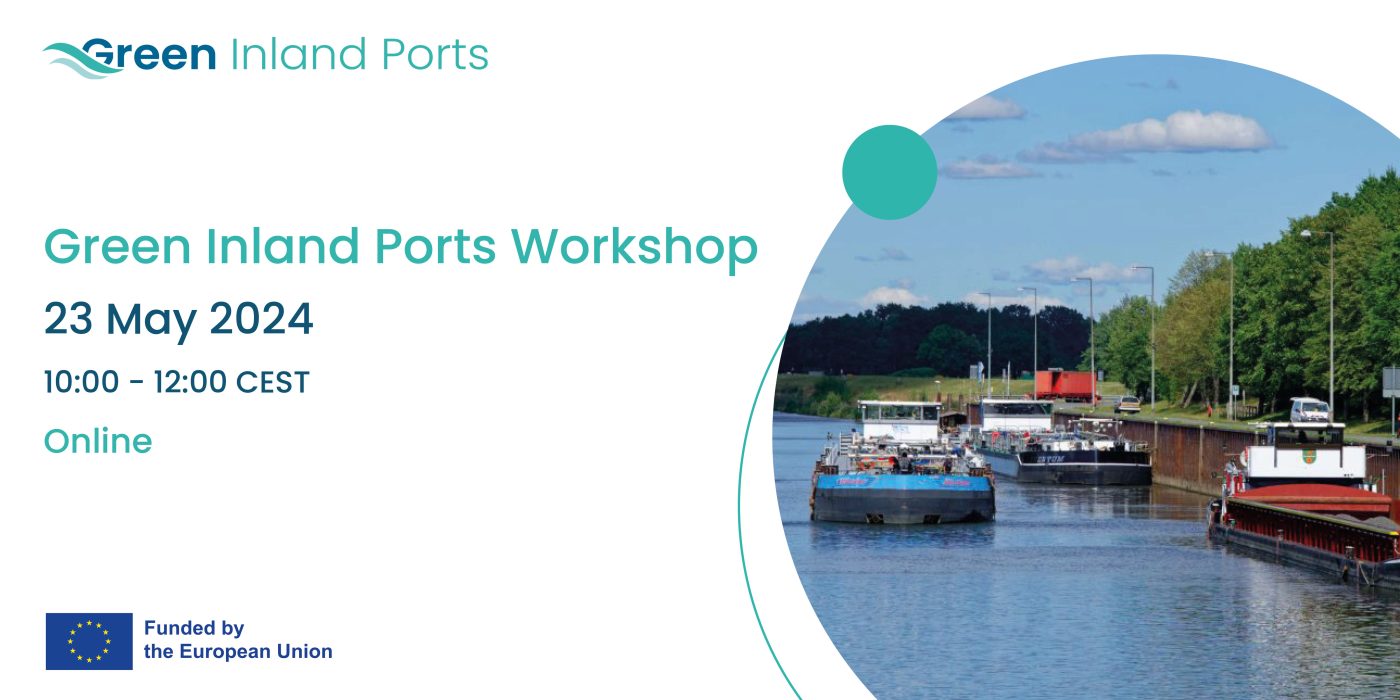On the 23rd of May 2024, the Green Inland Ports study team organised an online workshop. The primary aims were to engage with stakeholders, present the results of our research and gather feedback for our activities within the study.
Take a look at the key takeaways from the workshop below.
Task 1 – Environmental Impacts and Energy Efficiency and Transition
CE Delft presented their task’s main objectives and discussed calculating the environmental impact of inland ports, covering their work on good practices by looking into what measures ports are currently using to reduce their environmental impact.
CE Delft explained the tool developed to identify emission hotspots and monitor environmental performance using life cycle analysis. CE Delft asked stakeholders to provide initial feedback, with a particular focus on whether ports themselves find this tool helpful and for feedback on default values. The tool covers various port activities, including energy consumption, waste generation and more, allowing ports to input specific data and measure improvements.
Generally, the tool is perceived as being beneficial when providing an overview of emissions and detailed results on different terminals. The tool offers insights and tracking for Corporate Sustainability Reporting (CSR). However, stakeholders noted that the added value is unclear due to the existence of similar tools and challenges in data collection for landlord ports, raising questions around ease of use and whether port clients can input data themselves.
Stakeholders suggested that the calculation tool should incorporate standard, industry-wide recognised emission factors and sources, and include piloting in various port models with an open-for-modification approach based on results. Additionally, extending the survey to harbour tenants would provide comparable data for harbour areas.
Task 2 – Urban mobility and short-range inland waterway transport
Planco presented lessons learnt from different good practices for sustainable urban and short-range IWT and asked for participants’ feedback regarding the potential of these services for a sustainable modal shift. Through interviews and desk research, Planco developed profiles for each good practice case, covering administrative requirements, cargo flows, infrastructure and business models.
They highlighted that the key success factors and potential regulatory measures for freight and passenger transport were identified.

Task 3 – Digitalisation
Pro Danube’s presentation focused on digitalisation and opportunities for digital solutions for inland ports. Pro Danube asked for stakeholders’ feedback which could feed into a digitalisation masterplan which will outline the implementation of digital solutions.
They analysed a regulatory framework, finding no binding legislation specifically for port digitalisation, but identified general norms applicable to software solutions. Pro Danube also outlined survey results which found ports’ growing focus on environmental digitalisation in recent years, such as monitoring fuel, water and air quality. The analysed over twenty good practices globally, which were also presented, highlighting innovative environmental sensors and data dashboards.
Feedback from stakeholders regarding the main barriers to developing and implementing digital tools includes the overwhelming amount of data required, internal capacity limitations in management and project oversight and interface issues between different platforms. Additional challenges involve a lack of expertise, equipment, clear benefits for companies, mental barriers and resistance to change. The involvement of too many stakeholders, insufficient dissemination of good practices, and high costs further complicates the process, leaving operational departments overwhelmed.
Task 4 – Environmental and sustainable tools
Panteia presented a draft approach to help inland ports become smarter and more sustainable. The main aim of Task 4 is to develop an Environmental and Sustainable Management System (ESMS) for inland ports. This system integrates lessons learnt from other tasks and best practices to help ports transition to a sustainable and smart future. The ESMS covers environmental, business and social sustainability, offering tools and processes for monitoring and improving environmental impact. It includes modular components for different port sizes and activities, ensuring practical application and continuous improvement. The participants were asked for inputs and ideas regarding the tools which are in development.
Missed the workshop? Take a look at the presentations in the PDF below:
Green Inland Ports workshop May presentations

